Things To Do in Isfahan, Iran: Top Activities & Best Tourist Attractions
Isfahan Iran best masterpiece, the jewel of ancient Persia with its blue domes and historic bridges ranks as one of the finest cities in the Islamic world. Of all Things To Do In Isfahan, the exquisite blue mosaic tiles of Esfahan’s Islamic monuments, its expansive grand bazaar and those gorgeous bridges demand as much of your time as you can spare.
Isfahan, or Esfahan as the locals call it, invites visitors to walk its streets, get lost in the bazaar while searching for the finest Persian carpets, relax in beautiful Persian gardens, and enjoy tea and conversations with locals in the marvelous teahouses.
More than anything else, though, Esfahan is a place for savouring the high refinements of Persian culture most evident of the city’s unique attractions in and around its magnificent historic Naghsh-e Jahan Sq – the Imam Mosque, Sheikh Lotfollah Mosque, Ali Qapu and Chehel Sotun Palace.

What is Isfahan famous for?
Isfahan in Central Iran, considered as one of the must -see visited destination, famous for its historic monuments, blue domed mosques, a massive historical SQ, surrounded by a 500 years old palace, two magnificent mosques and a grand bazaar that takes your beaten away. Isfahan, Iran, is also a city of different heavy industries such as a famous steel factory. While you’re in this beautiful city, try to see and follow the best things to do introduced in this page, taste the local foods and make friend to explore the places only locals know.
Explore Ancient heritage & highlights, Altogether on → Best Iran tours 2025
Best things to do in Isfahan Iran & Tourist Attractions
Naqsh-e Jahan Square (Imam) | Address: Imam SQ

This magnificent, historically jammed UNESCO heritage site is the visitor’s first thing to do in Isfahan. When the French poet Renier described Esfahan as ‘half of the world’ in the 16th century, he drew inspiration from the myriad wonders of the square known as Naqsh-e Jahan. The description remains fitting today, as people still refer to it as Naghsh-e Jahan Square despite its official name being Imam Square. The square continues to showcase an impressive collection of grand sites, including the Imam Mosque, Sheikh Lotfollah Mosque, Ali Qapu Palace, and the Qeysarieh Bazaar—all from the Safavid empire.
Naqsh-e Jahan means ‘pattern of the world’, and it’s a world that owes much to the vision of Shah Abbas the Great. Begun in 1602 as the centerpiece of the Safavid empire’s new capital, the square featured designs for the finest jewels of the Safavid era: the incomparable Imam Mosque, the supremely elegant Sheikh Lotfollah Mosque, and the indulgent, lavishly decorated Ali Qapu Palace and Qeysarieh Portal.
Facts about Naqsh-e Jahan SQ
Naqsh-e Jahan measures at 512m long and 163m wide, this immense square is the second-largest square on earth – only Mao Zedong’s severe Tiananmen Sq in Beijing is bigger.
The square has changed little since its construction. Today, the upper level of arched arcades surrounding the square remains empty, and no plans exist to open it to visitors in the near future, despite ongoing discussions about restoring it as a museum of Esfahan’s history. The open space has undergone several reconstitutions, with the most recent changes made by the Pahlavis before 1979, who added the fountains. At either end of the square, you can still see the goal posts used in regular polo games 400 years ago. You’ll see these polo matches depicted on miniatures for sale around the square.
Imam square would keep you busy to go back and forth for a visit – its attractive vibe and a huge number of things to do all alone are the best reasons to be here. Visit the square in the late afternoon and early evening when local families outnumber Iranian and foreign tourists. This is also when the fountains turn on, the light softens, and the splendid architecture becomes illuminated. The view from the Qeysarieh Tea Shop is unbeatable.

Shah Mosque (Jameh Abbasi) | Address: Imam SQ
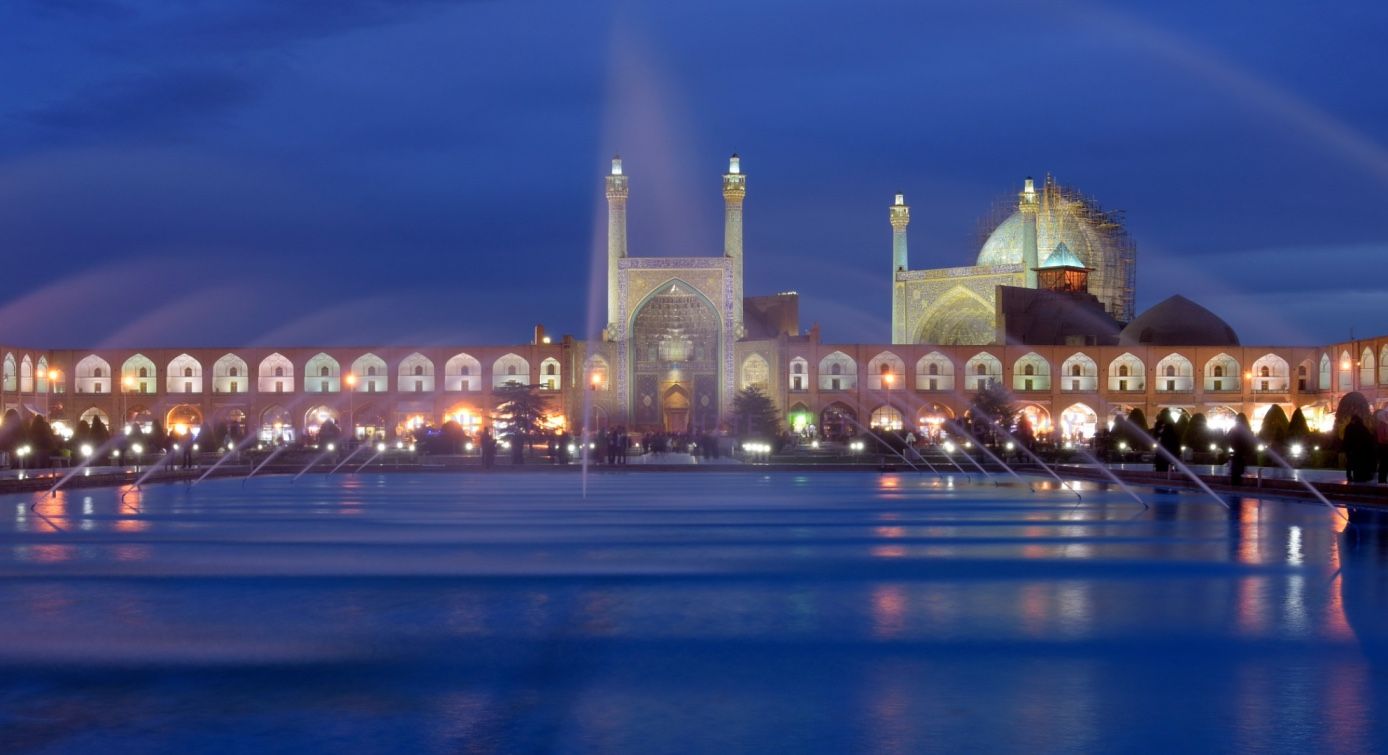
Jame Abbasi, Shah, or Imam Mosque, say it as you wish, this is probably one of the most beautiful mosques in the world. The richness of its blue-tiled mosaic designs and its perfectly proportioned Safavid-era architecture form a visually stunning monument to the imagination of Shah Abbas I and the ability of his architect. The sumptuous decoration of the mosque perfectly complements the architectural elegance. Shah mosque is probably the first thing you’ll see as soon as you step into the square and with no doubt, on top of the list of best things to do in Isfahan Iran.
Work started on the magnificent entrance portal in 1611, although it took four years to finish – look for mismatches in its apparent symmetry, intended to reflect the artist’s humility in the face of Allah. Shah Abbas completed the high dome and the mosque in 1629, the last year of his reign. Little has changed since.
Overall design of the Jame Abbasi Mosque
Although each of the Shah’s mosque parts is a masterpiece, it is the unity of the overall design that leaves a lasting impression. The original purpose of the much-photographed entrance portal had more to do with its location on the Imam square than with the mosque’s spiritual aims.
Its function was primarily ornamental, providing a counterpoint to the Qeysarieh Portal at the entrance to the Grand Bazar. The foundation stones are of white marble from Ardestan and the portal itself, some 30m tall, is decorated with magnificent moarraq tiled-work (mosaics featuring geometric designs, floral motifs and calligraphy) by the most skilled artists of the age. The splendid niches contain complex stalactite mouldings in a honeycomb pattern; each panel has its own intricate design.

Although entrance has been designed to face the square, the mosque is oriented towards Mecca. A short, angled corridor connects the square to the inner courtyard, which features a pool for ritual ablutions and four imposing iwans. The walls of the courtyard contain the most exquisite sunken porches, framed by haft rangi (painted tiles) of deep blue and yellow. Each iwan leads into a vaulted sanctuary. The east and west sanctuaries display particularly fine floral motifs on a blue background.
Of all the things to do in Isfahan Iran here is the top site. Enter the main sanctuary through the south iwan, and find a quiet corner to sit and contemplate the richness of the domed ceiling. Observe the golden rose pattern (the flower basket) surrounded by concentric circles of intricate mosaics on a deep blue background.
What is the echo feature at Imam mosque?
Sound bounces echo back N forth in the main hall under the dome, this is because the interior ceiling is 36.3m high, but the exterior reaches up to 51m due to the double-layering used in construction. The hollow space in between creates the loud echoes heard when you stamp your foot on the black paving stones under the center of the dome. Although scientists have measured up to 49 echoes, the human ear hears only about 12. These echoes ensure that any voices can be heard throughout the mosque. The craftsmen also beautifully created the marble mihrab and minbar (the mosque’s pulpit).
The main sanctuary provides wonderful views back to the two turquoise minarets above the entrance portal. Projecting balconies and white geometric calligraphy encircle each, highlighting the names of Mohammed and Ali repeatedly.
To the east and west of the main sanctuary are the courtyards of two madrasehs. Both provide good views of the main dome with its glorious profusion of turquoise-shaded tiles.
That’s it a brief history and study for Shah Mosque as one of the main tourist attractions & things to do while in Isfahan, Iran

Sheikh Lotfollah Mosque | Address: Imam SQ
Shah Abbas ordered the work of Sheikh Lotfollah Mosque as a uniquely designed private mosque for his royal court, making it exclusive to the royal family.
A study in harmonious understatement, beyond ordinary tourist attraction in Isfahan, Iran – this mosque is the perfect complement to the overwhelming richness of the larger Shah Mosque, and is arguably the most fabulous mosque in Iran. Shah Abbas I commissioned the work on Sheikh Lotfollah Mosque between 1602 and 1619 to honor his father-in-law, Sheikh Lotfollah, a revered Lebanese Islamic scholar. Sheikh Lotfollah had come to Esfahan to oversee the king’s mosque (now the Imam Mosque) and theological school.
Another fact about the Sheikh Lotfollah Mosque is that the design excludes minarets, which further proves that the mosque was not intended for public use. In some notes, the mosque named “Pink” or “Ladies mosque” as well.

Ali Qapu Palace | Address: Imam SQ
Kakh-e Ali Qapu is a six-story terraced palace that Shah Abbas built at the end of the 16th century. It stands as a must-see attraction in the historic square. The Shah ordered this palace as he wanted to sit, admire his magnificent new capital and perhaps to entertain his guests while watching the Polo game going in the sq. In addition, Ali Qapu, an Azeri term meaning ‘The Lofty Door,’ reflects Shah Abbas’s respect for Imam Ali, the first Imam of Shia Islam. There are beautiful motif painting in upper floor to which much of them damaged during 18th century.


Isfahan Grand Bazaar (Qeysariye) | Address: City center
Good for photography, carpet & souvenir shopping and ranks high for best things to do in Esfahan, Iran.
Esfahan’s Grand Bazaar links Imam Sq with the Jameh Mosque through the old town. The 1.7 km walk takes you through the bazaar’s arched passageways, topped by a series of small domes, each with an aperture at its apex that directs light below. While the oldest sections of the bazaar, around the Jameh Mosque, are over a thousand years old, Shah Abbas built most of what you see today during his expansive building projects in the early 1600s.
This bazaar also known as the Qeysariye (More pointing to the detailed waiting on the entrance of the bazaar) is full of artisans making traditional Isfahan handicrafts of very high quality. It is a very dynamic place walking you through the history. In particular look out for the traditional handicrafts – be that intricate metalwork, painted miniatures, hand-printed floral fabric (Qalamkar), blue mosaics, Persian carpets and the delectable local nougat called ‘gaaz’.


Jame Mosque | Address: Majlesi St, Old Town
Walking through the bazaar, you’ll see the 800 years old Jameh Mosque, a veritable museum of Islamic architecture . Beside being a tourist attraction, is still a working mosque within a couple of hours of visit, you see & feel and compare 800 years of Islamic design, with each example near to the pinnacle of its age. The range is quite stunning: from the geometric elegance of the Seljuks, through to the Mongol period and on to the refinements of the more baroque Safavid style. At more than 20,000 sq metres, it is also the biggest mosque in Iran.

Chehel Sotun Palace Garden | Address: Ostandari St
Out of the must-see attractions in Isfahan this is one of the only surviving Garden palaces from the royal parklands between Imam Sq and Chahar Bagh Abbasi St, Safavid-era Chehel Sotun is today most famous for its frescoes and fine historic painting depicting most important events of the Safavid Era.
Shah Abbas II completed the palace in 1647, as indicated by an inscription uncovered in 1949, although historical references date back to 1614. Originally built as a pleasure pavilion and reception hall in an Achaemenid-inspired columnar style, the palace was rebuilt after a fire in 1706. Today, it remains one of the top attractions in Esfahan.
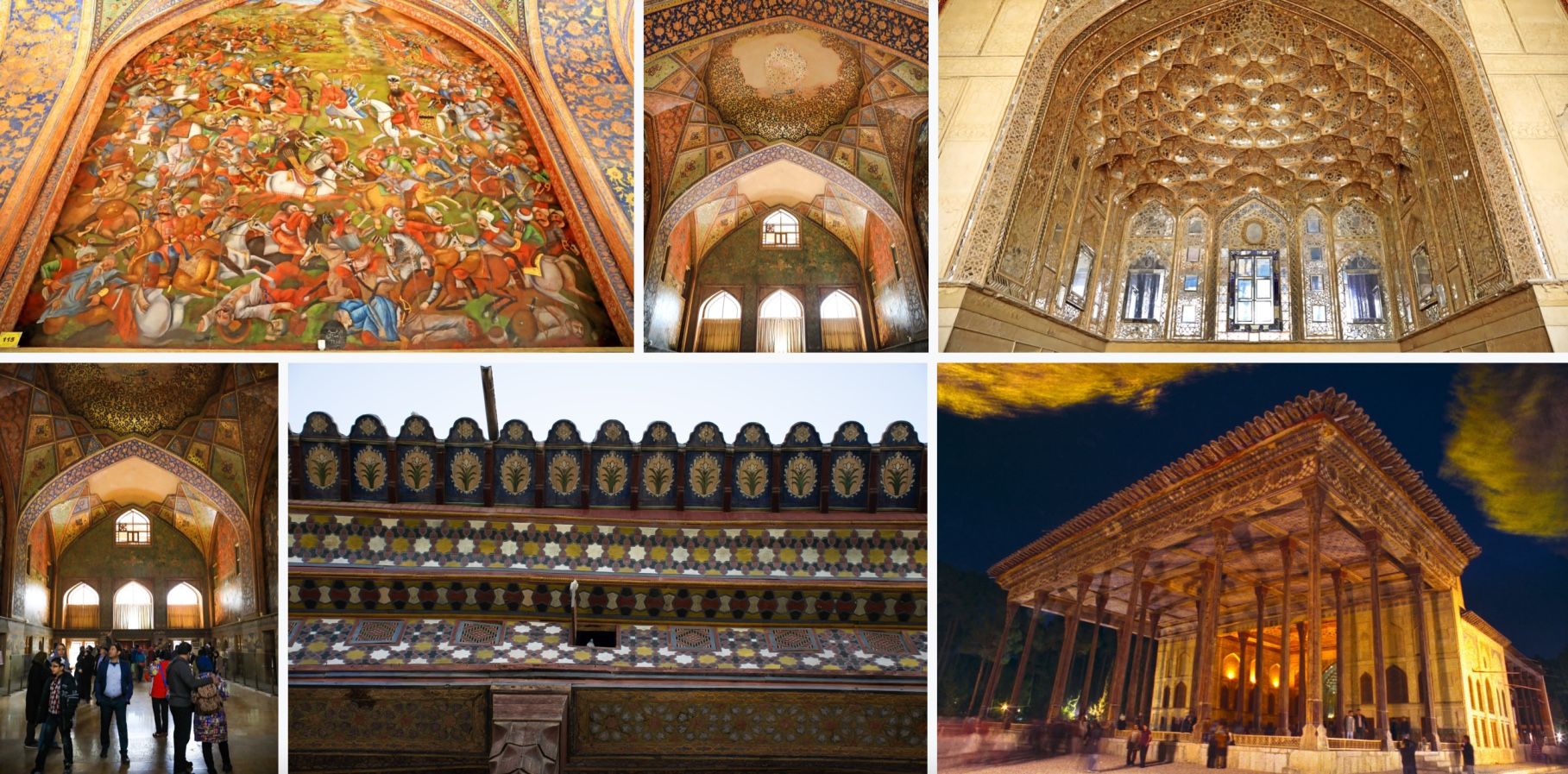
Hasht-Behesht Palace | Address: Ostandari St.
Situated in the middle of a vast parkland that was once Isfahan’s most luxuriously decorated palace garden, the small Hasht Behesht Palace has suffered extensive damage over the years. However, it retains a seductive tranquillity, with the soaring wooden columns on its open-sided terrace seeming to mirror the trees in the surrounding park.

Hammam-e Ali Gholi Agha bathhouse | Address: Ali Gholi Agha alley
In the historic district of Bid Abad, the recently restored Hammam-e Ali Gholi Agha as one of the things to do in Isfahan -Is now a well-maintained museum to bathhouses. Fortunately there is information at the entrance, explaining the Qajar-era history and uses of the hammam.
The Historic Bridges of Isfahan IranOne of the best things to do in Isfahan is to take a stroll to visit a series of famous historic bridges over the Zayandeh river. Try to visit the bridges at night to have a chance to see local crowds signing & dancing by the bridges. |
Best Things to do in Isfahan Iran by night?
If you’re wondering what to do in Isfahan by night, then, there are few better ways to spend an afternoon or evening than strolling along the Zayandeh River, crossing back and forth using the old fairytale bridges and listening to Esfahanis reciting poetry and just chilling out.
A stroll at sunset and early evening is especially pleasant when the Zayandeh River bridges light up. In total, 11 bridges (six are new) cross the river.
All but one of the historic Safavid-era crossings lie to the east of Chahar Bagh St – the exception is the shorter Marnan Bridge – but most people satisfy themselves with the walk from Si-o-Seh Bridge to Khaju Bridge, and back.
Si-o-Seh Bridge | Address: Zayandeh River Area
Allahverdi Khan, a favorite general of Shah Abbas I, built the 298-meter-long Si-o-Seh Bridge between 1599 and 1602 to connect the upper and lower halves of Chahar Bagh Street in Isfahan, Iran. The bridge also served as a dam and still holds water today. Until recently there were teahouses at either end of the bridge, both accessed through the larger arches underneath, though only the northern one remains.
Khaju Bridge | Address: Zayandeh River Area
Arguably the finest attraction in Isfahan, Shah Abbas II built the Khaju Bridge around 1650, though a bridge likely spanned the waters here since Tamerlane’s time. It also doubles as a dam, and has always been as much a meeting place as a bearer of traffic.
Its 110m length has two levels of terraced arcades, the lower containing locks regulating water flow. If you look well, you can still see original paintings and tiles, and the remains of stone seats built for Shah Abbas II to sit on and admire the views. In the centre, a pavilion was built exclusively for his pleasure. It was a teahouse, but not anymore. The best is to walk between the bridges on he bank-side of the river through the pleasant parkland areas.
Chubi bridge | Address: Isfahan Zayandeh river
Shah Abbas II built the 150-meter-long Chubi Bridge with 21 arches in 1665 to primarily help irrigate the palace gardens in the area. Chubi and the two parlours within were for the exclusive use of the shah and his courtiers. Until recently one of these parlours was one of the most atmospheric teahouses in Iran; hopefully it will be again.
Such a stroll is especially pleasant at sunset and early evening when most of the Zayandeh river bridges are illuminated. In total, 11 bridges (six are new) cross the river.
All but one of the historic Safavid-era crossings lie to the east of Chahar Bagh St – the exception is the shorter Marnan Bridge – but most people satisfy themselves with the walk from Si-o-Seh Bridge to Khaju Bridge, and back.

Jolfa → Isfahan’s Armenian Quarter
Esfahan’s Armenian quarter is Jolfa. It dates from the time of Shah Abbas I, who transported this colony of Christians from the town of Jolfa (now on Iran’s northern border) en masse, and named the village ‘New Jolfa’. Abbas sought their skills as merchants, entrepreneurs and artists – a look at the walls of Vank Cathedral reveals what he was after.
The Armenian Christians enjoyed religious freedom but had to stay across the river, away from the Islamic centers.
Vank Cathedral | Address: Jolfa quarter, Isfahan Iran – a must see sight
Built between 1606 and 1655 with the encouragement of the Safavid rulers, Vank Cathedral is the historic focal point of the Armenian church in Isfahan Iran. The church’s exterior lacks excitement, but the interior dazzles with a rich decoration that blends Islamic tiles and designs with Christian imagery, a characteristic feature of most churches in Iran. The frescoes are truly magnificent, and sometimes wonderfully gruesome.
Church of Bethlehem | Address: Jolfa
While sightseeing around the Jolfa quarter, you’ll see this beautifully, somehow hidden church. The frescoes on the walls and ceilings of the Church of Bethlehem, built in 1628, are arguably of a higher quality. The high dome features swirling black motifs on a golden background, and the base displays paintings of Biblical scenes.
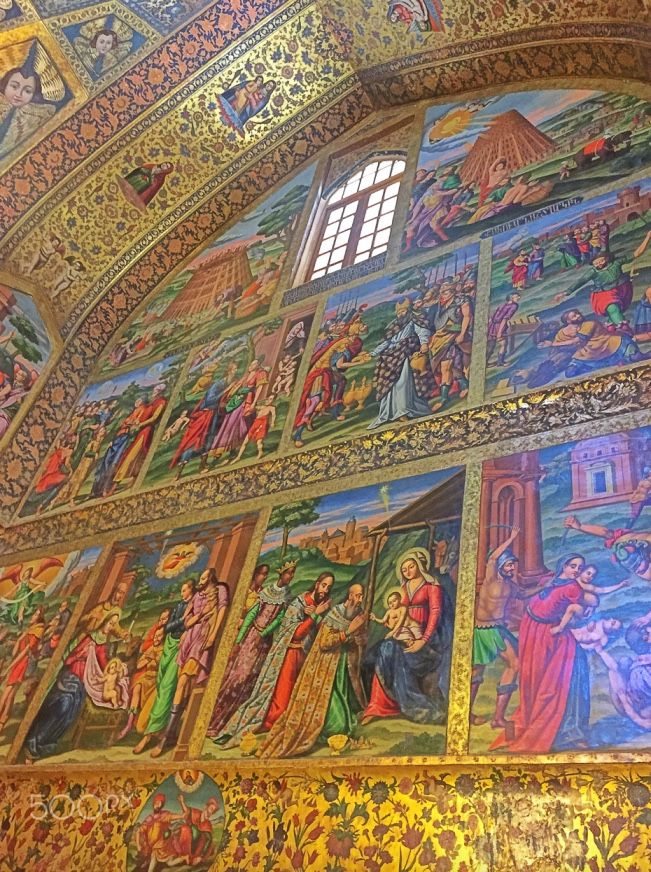

How many days do you need in Isfahan?
Visiting Isfahan as part of a trip in Iran and you should plan to spend at least 2-3 days in this historic city with huge number of attractions and plenty of things to do. This includes exploring the iconic blue mosques, the bustling grand bazaar, historical bridges and Armenian quarter. You’ll want a full day for the Imam SQ alone, with another day or two for the other sights. However, if your itinerary is more flexible and you’re not in rush, I would say 4-5 days to spend in Isfahan since the city worth every minutes of staying in.

What’s So Special About Isfahan Iran? Why should I visit?
Reasons to visit Isfahan – Often referred to as the Jewel of Persia and one of the finest cities of Islamic world – city of blue domes & historic bridges – a city where explorers describe it as a “Half of the world“. The modern Isfahan is as, quiet, safe & vibrant and beautiful as it is overwhelming. Isfahan is a must see city for any tourist visiting Iran. In addition, if you’re interested in to see the architecture and historical monuments back in the day from the Safavid empire era, Isfahan is a place to visit.
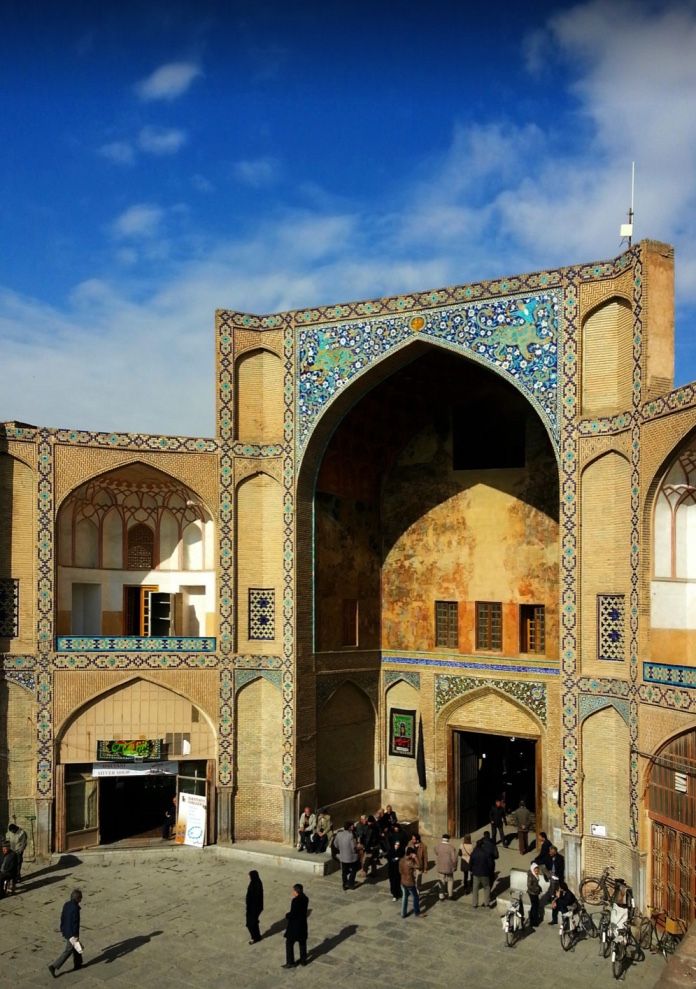
Is Isfahan and Esfahan the same?
Is it Isfahan or Esfahan? Well, both are correct with notes as if to pronunce it in Farsi language or English. Iranian call it as “Esfahan” which refers to historic names of the city such as Sepahan, Espahan, Sepah. However, the historic city pronounced as “Isfahan” in English. However, the city is about 350 km south of Tehran, with population of around 1.5 million ranked Iran’s third largest city after Tehran, the capital city and Mash’had, in the eastern side of the land. Check out Cities in Iran
What are the sister cities of Isfahan, Iran?
Isfahan, Iran, has several sister cities, including: Perth (Australia), Florence (Italy), Tianjin (China), These relationships are designed to foster international collaboration and cultural exchange between the cities.
What does Isfahan mean in English?Isfahan in Persian language has been literally translated into few words such as Sepahan, Sepah, or, Espahan, which means “City Of Armies”, or where the armies get together. Isfahan however was capital of Persia from late 15th century till early 17th. Some Iranian also translated Isfahan to “”Safahan” means where you find peace. In addition, the old name of Isfahan said to be “Espadana”. |
How safe is Isfahan, Iran for tourists?
Isfahan, a central city of Iran, is generally considered as a very safe for tourists. It has a low crime rate compared to many other cities globally, and violent crime targeting tourists is rare. Also, safety tips for females, Isfahan, is generally considered safe at night even if you’re a solo female traveler. Crime rates are quite low, and locals are often polite and respectful and very hospitable.If you’re in need of help, such as emergency, try to call police by 110.
In addition, if you believed everything you hear in the news, Iran, or, Isfahan, would not be on anyone’s travel itinerary.
Why is Isfahan called half the world?
Such is Isfahan’s grandeur that it is easy to agree with the famous 16th-century half-rhyme ‘Esfahan nesf-e jahan’ (Esfahan is half the world). Robert Byron was slightly more geographically specific when he ranked ‘Isfahan among those rarer places, like Athens or Rome, which are the common refreshment of humanity’. Today it is a Unesco World Heritage site. Simply locals also describe it as a city to experience whole world in it.

Why’s Isfahan so famous?
Isfahan is famous in so many ways, the historic city is famous for its great Islamic architecture, peaceful yet grand boulevards known as Chahar Bagh, Zayandeh roud bridges, Persian garden palaces, beautiful mosques, and minarets. Isfahan also has many historical monuments, centuries old paintings and artifacts.
5 Best Day Trips from Isfahan
There are also few option to consider as a day trip, or excursion from Isfahan. The distances are long, so the options are a bit limited, however, here are few day trips worth to go while in the beautiful Isfahan:
Atashgah, the Fire Temple of Isfahan
Dating from Sassanian times, the crumbling mud bricks of the Ateshkadeh-ye Esfahan stare out over the Zayandeh River and Esfahan city from a low hill on its outskirts SOME 10km from the city center. The 10-minute scramble uphill is worth the effort on a clear day, the view is nice and climbing worth the photography .
The Shaking minarets
The 14th-century tomb of Abu Abdullah, a revered dervish, is 7km west of central Esfahan in the same road to fire temple. The tomb is popularly known as Manar Jomban because pushing hard against one minaret will start it, and the other minaret, surprisingly swaying back and forth. The minarets were added during the 17th century. Attendants climb up to shake them once an hour, on the hour. Iranians love this sight in Isfahan, and it’s worth the day trip if its included together with other visits.
Pigeon towers
For centuries Esfahan relied on pigeons to supply guano as fertiliser for the city’s famous fields of watermelons. The guano was collected in almost 3000 squat, circular pigeon towers, each able to house about 14,000 birds. Today they are unused, but worth the visit, however, they are nowadays made redundant by chemical fertiliser, but more than 700 of the mud-brick towers remain in the city’s environs.
Mount soffeh – Roof of Isfahan
The rocky mountain located in the southern part of the city on the Esfahan-Shiraz highway. Locally known as the roof of Isfahan and is a popular gathering spot among the Isfahani. You’ll need a taxi to get there, and once in there, you’ll have several station to stop. The roof of Esfahan is more chill at night, so try to visit it during the evening. The view over the city is amazing, in addition, the Mount Soffeh is a great place to meet locals. Once up there, you could use the cable car to get back down.
Desert of Varzaneh
Being popular, Varzaneh Desert is located 110km southeast of Isfahan on the way to Yazd. This somehow hidden oasis offers enough to fill a day trip up well-enough. Activities to do including camel riding through the sand dunes, visit Gav-Chah (named after a cow pull the water bucket up from the well) & salt lake. To get there independently, take a bus from Jey bus station in Esfahan. There are also few home-stays in the area suitable for the overnight stay. If you’re heading to Varzaneh on weekends, try to book your stay in advance. The best sand dunes in Varzaneh are in nearby “Hasan Abaas village”.
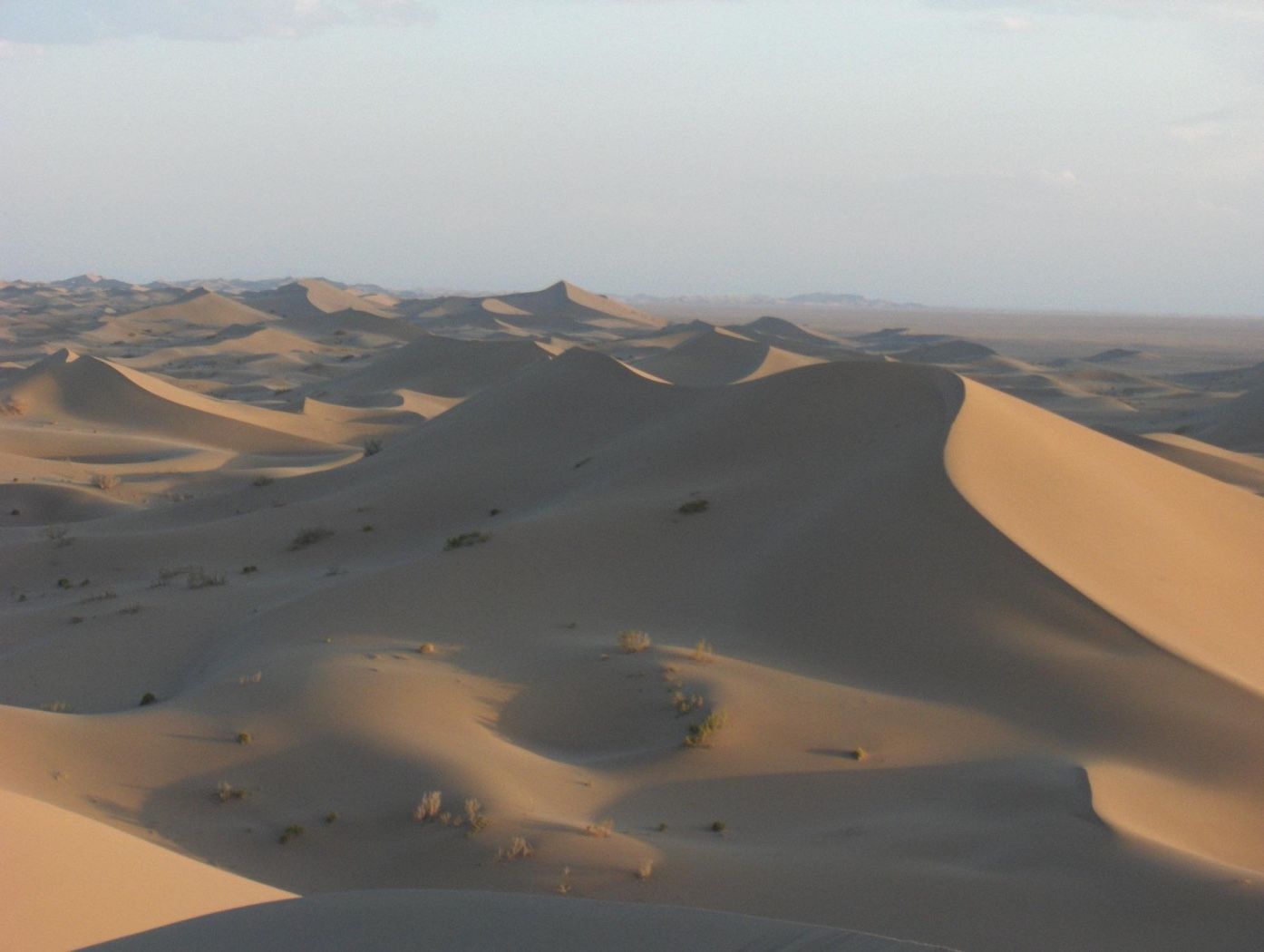
Best FREE things to do while in Isfahan, Iran
There are heaps of things to do in Isfahan and attractions to check out while in the city that easily fills few days of your visit to Iran. Beside meeting locals and engage to fun activities to do with them, such as ski out of Isfahan during winter season. Following are few free things to do in Esfahan Iran.
Madreseye Chahar Bagh | Address: City center
The Madraseh-ye Chahar Bagh (Historic Theological School) was built between 1704 and 1714 as part of an expansive complex that included a caravanserai (now the Abbasi Hotel) and the Bazar-e Honar. Revenues from these buildings paid for the upkeep of the madraseh. The Theological School is one of the architectural masterpiece belong to the end of the Safavid era. The huge complex decorated with bright yellowish bricks, gold and silver façade, and astonishing tile-works.
Honar gold & silver grand bazaar | Address: City center
Walking through Chahar Bagh walking street and you’ll soon see an impressive gate leading you into a 200m passage with high arcaded ceilings where there are an abundance of jewelry shops including handicrafts. Unlike the grand bazaar this one is light, spacious and airy and not that big. Really worthwhile a visit, an ld 18th century bazaar in a Safavid architecture setting.
Try Persian Food in Isfahan
Persian foods in Isfahan – Iranian cuisine is very good and it’s heavily based on rice, bread, fresh vegetables, herbs and fruit. Meat, usually lamb or mutton minced or cut into small chunks, is used to add flavour but is rarely the dominant ingredient, except in kebabs.
Sadly for travellers, this usually translates into the same two or three standard dishes of kebabs or chicken, with rice, vegetables and bread – you need to be invited into homes or splurge on upmarket hotels to eat the best Iranian food.
The national drink of Iran as well as Isfahan is undoubtedly chay (tea), always served scalding hot, black and strong, somehow very similar to English breakfast tea in taste. All sorts of delicious fresh fruit juices, milkshakes and yoghurt drinks are available throughout Isfahan.
East Beryani In Isfahan
Biryan (Beryoon) is the traditional dishes of Isfahan. Unlike the Indian version of Biryani, which is comes with a blend of spices and chicken with rice, this one in Isfahan is comes with only the name similar to the one in India. Biryani is Isfahan’s local food and and it is made of minced sheep’s liver prepared like patty served with hot bread and mix of fresh veggies such as basil and mint. And, if you ask me where in Isfahan is the best to eat Beryan, I’d tell you, ask the guy in your hotel, since each street claims to have the best one in Esfahan.
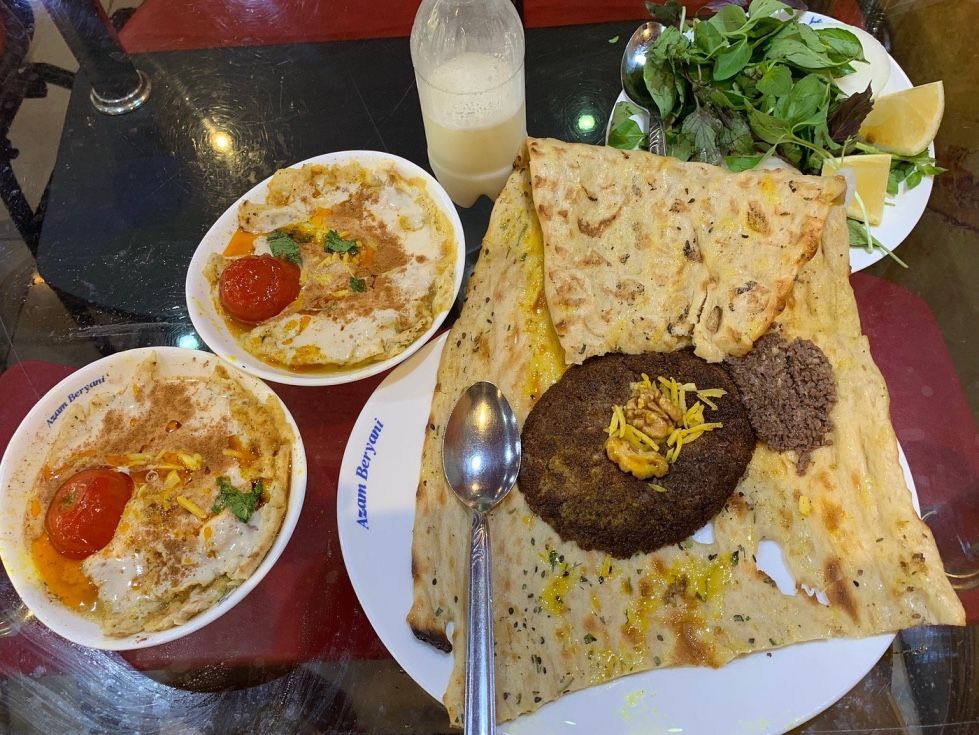
Isfahan travel tips → Guide for first times
Looking for Isfahan tips for first timers? Lucky you – that means you are probably trying to plan a trip to Iran in 2025! After my first 24 hours in Isfahan, I was completely overwhelmed by how peaceful this city is. You will get what I mean after you experience sightseeing and feeling the walk beside the history. Here are few general tips for Isfahan;
The best places to stay while in Isfahan, Iran
I don’t want to keep mentioning this, but seems I have to. The universal hotel booking platform such as booking & Agoda, or, Air BNB are not working in Iran since there isn’t anyway for the payment (This Is Due To Sanction). So, what is the best way to book a hotel in Iran Isfahan? There aren’t much of backpackers places to say, however, there seems to be a handful of newly build boutique hotels and old houses restored and operated now as a hotel – You can search for them on Instagram (Best social platform in Iran for reasons), contact and book your stay in advance.
The best places to stay in Isfahan would be around the “Chahar Bagh street” “Imam SQ” and anywhere around the Zayandeh River.
Isfahan Weather → When’s the best time to go?
Late February to May & Late September to Mid- November are great months for visiting Isfahan.
Generally, best time to visit Isfahan are spring & autumn, when the nights are chill but the daytime temperatures are absolutely pleasant. From mid-June to September, the climate becomes really dry & hot and visits to the city are less pleasant. Winter climate is dry and cold, sometimes with snow.
Money matters, credit cards in Isfahan
Keep all your credit cards, amex, visa & master at home and bring all the money you need in cash. Euros and USD are the best, fastest and most comfortable foreign currencies to exchange in Isfahan. There’s no ATM as well, so bring cash even though it sounds not easy, the sanction made Iran to be behind all the universal money system. Hotels may accept USD, however, shopping, transportations, eating and sightseeing should only be paid in Iranian Rial. When in Esfahan, Sepah street (the one leading to Imam SQ), is the best place to exchange Dollars into Iranian rial.
The best ways to get around Isfahan
Isfahan on foot or cycling around: As a tourist, expect to walk the distances, since the majority of tourist attractions and pretty much all the things to do and activities are within walking distance, you can easily take a walk and or get a free bicycle provided by city’s municipality located at Darvaze Dowlat SQ (5 min walk to Imam SQ).
Take the efficient city buses: Cheap, affordable, clean and easily accessible city buses are he best option to get around the town and anywhere else with the city. The bus # 91 travels all the way from Kaveh bus terminal to the city center and to the southern end of the town.
Isfahan by metro: Since its opening date in 2016, the subway lines are still expanding, however, if you’re going to stay in Isfahan for longer time, you’ll definitely need to get around using metro.
Taxis in Isfahan: They are cheap and quite fast even though they aren’t metered taxi like many other places, however, they have fixed fare for the routes you ask to travel. If you are in rush, take the Taxi Dar Bast (literally means closed door that is posting to taking the taxi privately at your own). Note that taxis in Iran run between destinations once they are full (4 passenger), so you ask them for Dar Bast, only if you want the taxi run to your destination with you s he only passenger.
How to get to Isfahan from Tehran
There are few big and very efficient bus terminal on all the four corners of Isfahan which operating number of buses to anywhere in Iran.
Terminal Kaveh is the biggest in town & in the north of the city runs several daily buses (Depart once every hour) to Tehran, Shiraz, Yazd, Rasht & Mash’had. The Soffeh Bus terminal, in the southern edge of the town, also operates super deluxe, comfy buses to all above cities plus to the southern cities of Iran such as Bandar Abbass, Bushehr, Zahedan, Lrestan and more. Terminal Jey, best if you’re traveling to desert town such as Yazd, or Kerman.
Getting to Isfahan by Train
There is a daily train between Esfahan and Tehran (six-berth, 7½ hours) that leaves at 11.30pm and stops at Kashan. Trains also run to Mashhad (Ghazal/six-berth, 18½ hours, 5.50pm daily) and Bandar Abbas (six-berth/six-seat, 2.25pm Monday, Wednesday and Friday). There are daily train to Shiraz as well.
The train station in Isfahan is way out to the east of the city. To get here, catch a bus from outside Kowsar International Hotel; ask for the ‘istgah-e ghatar’ and you’ll be put on the right bus. Be at the bus stop well over an hour before your train is due to depart. A private taxi can cost almost as much as the train ticket to Tehran. Alternatively, take a shuttle taxi south from the south end of Si-o-Seh Bridge.
How to extend your tourist visa in Isfahan, Iran
Isfahan is considered as one of the best places in Iran to extend a tourist visa. The simple & hassle free process makes you want to stay here longer. Show up early in the morning, preferably before 8AM, hand your original passport, fill out a visa extension form, 2 photograph and Euro 5-10 (Depending on your nationality + the place you picked your original visa).
You can then pick your passport with one month visa extension later in the same morning.
Itinerary →Isfahan in 3 days
The most ideal itinerary suitable for first times to soak up in the culture, tradition and history as well as go beyond ordinary and explore less visited attractions and some of the best things to do while in Isfahan, Iran. Here is the suggested 3 day itinerary …
Day 1 → Start a day as early as possible to visit the Naqsh-e Jahan Square (Imam SQ), one of UNESCO World Heritage Sites of Iran. The SQ is surrounded by several moments onits 4 sides. Time to explore the stunning Imam Mosque, Sheikh Lotfollah Mosque, and Ali Qapu Palace.
Grab a local lunch in the SQ and a tea to relax, then walk to nearby Chehel Sotoun Palace garden. In the evening, take a stroll along the Zayandeh River and enjoy the historic bridges Of Si-o-se-pol and Khaju Bridge, join the locals for signing and probably some dancing by the Khaju Bridge.
Day 2 → Explore Bazaar & surrounding monuments
Head toward the grand bazaar at the northern side of the Imam SQ, walk inside and follow the passageway around 1.7KM to reach the ancient Jameh Mosque of Isfahan, one of the oldest and most unique mosques in Iran with 4 Iwan architecture.
After lunch, go local and eat Beryan in bazaar, then head to the Armenian quarter and visit Vank Cathedral, a beautiful Armenian church with stunning frescoes and a an adjoining museum.
Later in the afternoon, visit the Hasht Behesht Palace, a beautiful palace, enjoy time to visit the lonely palace and the peaceful parkland around the monument.
In the evening, head to the Mount Soffeh, join the locals and spend the evening watch the Isfahan from the highest point.
Day 3 → Less visited tourist attractions in Isfahan
Head toward the west of the city and visit shaking minarets (Menar Jonban), next, visit nearby Atashgah, climb a hill for Zoroastrian fire temple in Isfahan
Eat you lunch around the same area, then take taxi, or hop on a city bus and go ahead to Masjid-Seyed Street, a very historic part of the town to visit the Ali Gholi Agha Hammam, a historic example of a Persian bathhouse.
In the evening, head to Imam SQ again, find a teahouse and relax and enjoy the atmospheric SQ.
0